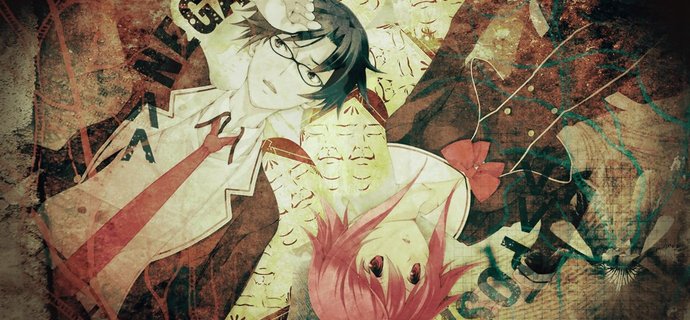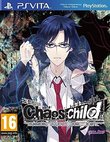As much as we love ourselves a good story-driven game, there is one small problem with playing so many visual novels - they can be so flipping long. Fresh out of Danganronpa 2 (yes, we know we're a bit behind), we found ourselves thrust straight into a dark and disturbing murder mystery in the form of Chaos;Child, the latest entry in the much-loved 'Science Adventure' series, whose spotty Western release list includes just Steins;Gate (and its 'sequel' Steins;Gate 0) so far. All we can say is it's a good job we like reading.
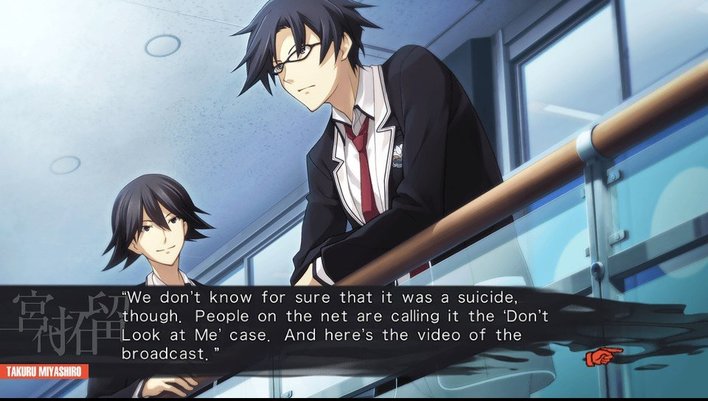
Wannabe detective/reporter Takuru has a bit of an unhealthy obsession with mysteries.
Technically a sequel to the Japan-exclusive Chaos;Head, Chaos;Child is another visual novel - a genre which is essentially a game-ified choose-your-own-adventure book - set some six years after the huge earthquake that levelled the Shibuya district. Prior to the quake, a string of strange, and rather gruesome murders took place, known colloquially as the 'New Generation Madness' - and as luck would have it, a new series of mysterious serial killings have copped up, just in time for the six year anniversary of the earthquake, with each taking place on the same dates as before. Catching the attention of Takuru Miyashiro, a socially-awkward teenage boy with a bit of an obsession with criminals, strange goings on and urban legends, he and his friends in the school newspaper club race to try and solve the Return of the New Generation Madness killings before the police - although they soon discover the rabbit hole goes much deeper than they ever expected... A twisting and turning tale of creepy murders, mysterious powers and government conspiracies awaits, in what is another winning visual novel from the folks behind Steins;Gate.
But if you haven't been keeping up with the series so far, there's no need to worry. Chaos;Child stars a whole new set of people, and is a largely separate story to its predecessor, even if it does take place in the same world, covering similar events. If you really wanted to, there is a Chaos;Head anime in English floating around - although we found we could follow things just fine without a primer in the original New Generation Madness killings. Through general story exposition, and a liberal "tips" system that gives you bonus information on various key words and events along the way, we didn't really feel like we were missing out on much.
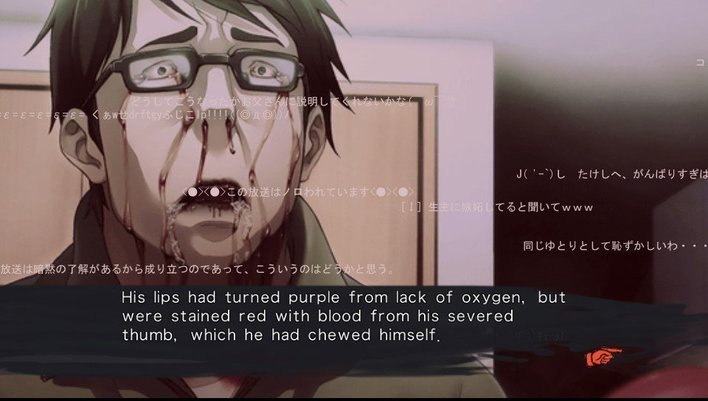
Nice.
The first thing we noticed about Chaos;Child is that, unlike Steins;Gate, it takes much less time to get going. In fact, as soon as you start a new game, you're drawn in to the first of the two murders, where a Niconiya (essentially YouTube) streamer chops off his own arm and starts eating slices of it, live on camera, in some kind of trance. While you're still reeling from that, a popular musician slices open her stomach and buries a small speaker inside herself, before heading out to do a show in the streets, miming along to the recording emanating from her guts until she dies, like some sick and twisted episode of Top of the Pops. Murder after grisly murder crops up, as Takuru becomes increasingly involved in the case along the way, desperate to make discoveries before the police get their act together, and get to the bottom of the case himself - often to the point of sneaking into fresh crime scenes and getting himself in trouble.
But, despite Takuru's protestations to the contrary, he's still just a fairly normal secondary school kid, and Chaos;Child is part murder mystery, part Japanese high-school drama, with all the usual goings on. There's school festivals to prepare for, blossoming romances between friends and, of course, the obligatory wind-blown skirts and accidental boob grabs of young adulthood, as well as many a cutesy home scene involving Takuru and his adoptive siblings (he lives in a small orphanage with others who lost their parents in the earthquake). It's these more light-hearted interjections between the murders that stop Chaos;Child from getting too grim - although as the mystery grows, the story naturally gets more tense, and such carefree moments become a thing of the past. Chaos;Child's cast is as likeable and oddball as ever though, whether it's Takuru's skirt-chasing best mate Itou, his adoptive sister with her hair-trigger temper, or a mysteriously mute member of the newspaper club who answers everything with an 'Mmmm' whilst obsessively playing MMOs in the corner.
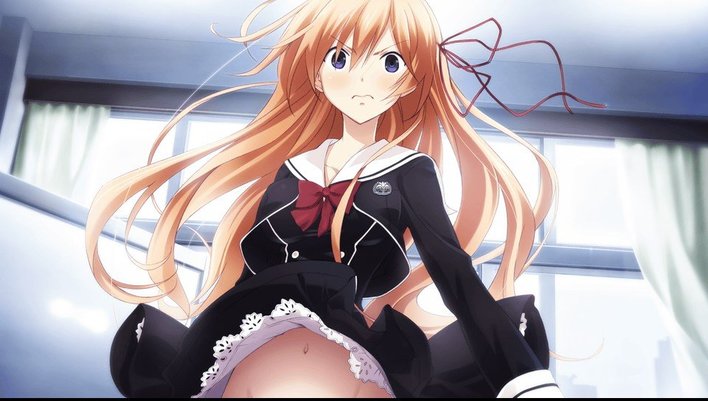
You better not say anything about seeing her undies, or else Kurusu will have your guts for garters...
At certain points in your investigations, Takuru and co will need to sit back and review what they've learned about the killings via a large map of Shibuya on the wall. Like many a police drama, you'll need to pin pieces of information to the board, making the right deductions along the way - perhaps placing the crime scene pictures with the relevant murder, or matching post it notes of your conclusions to the right case. As a clever way of checking whether you're following the logic at critical points in the story, and a nice way of adding a little bit more interactivity in a very passive game, this is a really nice touch, albeit one that has no bearing on story branches or different endings - for that, you'll need to make use of Takuru's over-active imagination.
During the course of the story, Takuru can experience various 'delusions' along the way (essentially, daydreams) which lead to some unique, and often funny, scenes along the way - although their relevance won't be clear until a good way through the story. At certain points during conversations, two circles will appear on opposite sides of the screen, one labelled positive and the other negative, and by tilting the right analogue stick one way or the other, Takuru can experience either a positive or negative delusion - or, if you do nothing at all, simply stay routed in reality, rather than drifting off to daydream land.
Positive delusions tend to be funny or awkward situations, perhaps trying to catch a glimpse of a female friend's underwear, a first kiss or making an enemy's trousers fall down, while negative delusions can get a bit more sinister, as you might see a murderous frog burst out of people's chests, or accidentally kill fellow students, with some even straying into sexual assault. While all these situations technically take place entirely in Takuru's head, they can sometimes affect how he behaves in real life, perhaps causing him to distrust someone more than he otherwise would have, or take a different path of action, eventually leading you down the different endings (although on your first playthrough, you'll always get the same ending regardless of what you do along the way). However, disappointingly, the game totally neglects to explain what the delusion system is, and how it works. While you might notice the positive and negative bits pop up at the side of the screen, there's nothing at all to tell you that you can do something with them, or how, yet alone anything to even suggest that they're an interactive branch. A few lines of explanation when you first encounter them was all it would have taken - for something so important, it seems like a bit of an oversight.
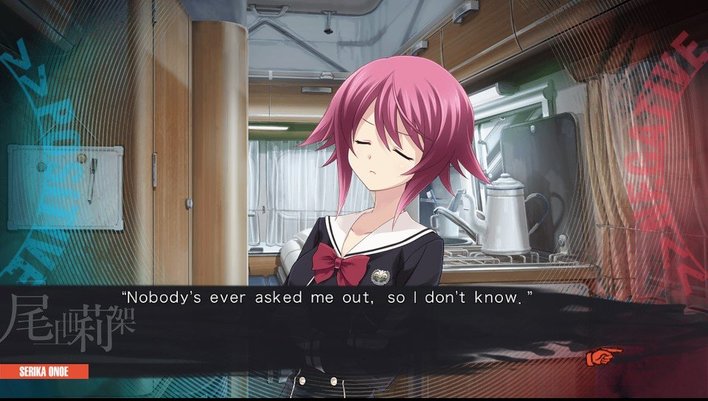
Pressing right or left for positive and negative will show you two different scenes, some light-hearted and silly, some not so much...
A few other peculiar design decisions get in the way too - most notably, in the case of one character who threatens you in the early hours of the game. Throughout the story, Takuru has flashbacks to this traumatic scene - yet, outside of the initial conversation, they're not subtitled. What that means is, you actually end up left with a rather unhelpful zoomed in shot of someone's mouth whilst she threatens you in Japanese. What's even stranger, is that if you head into the back log (which tracks everything that's been said in case you need a refresh), the lines will be listed in English - yet what's said on screen is in Japanese. . In a similar vein, a couple of scenes show text scrolling across the screen entirely in Japanese, with no subtitles - and we can't help feeling like we're missing something important, especially as the main narrative pauses to let the text pass by.
Generally when you're playing a visual novel or another such text-heavy game, the odd typo slips through here or there, and for the most part, it's not really a big issue. Unfortunately, Chaos;Child seems to have more than the odd typo - some words run together, are missed out of sentences or appear twice in the same line, while others are spelled entirely wrong ('sychic' instead of 'psychic', for example). On occasion, the game even uses entirely the wrong word, saying how a police officer wasn't allowed to let a minor into a room 'unsurprised' rather than 'unsupervised'. There's not enough typos to render the game complete gibberish - far from it - but there's just a few too many mistakes. When coupled with the missing translations above, it does make things feel a little sloppy.
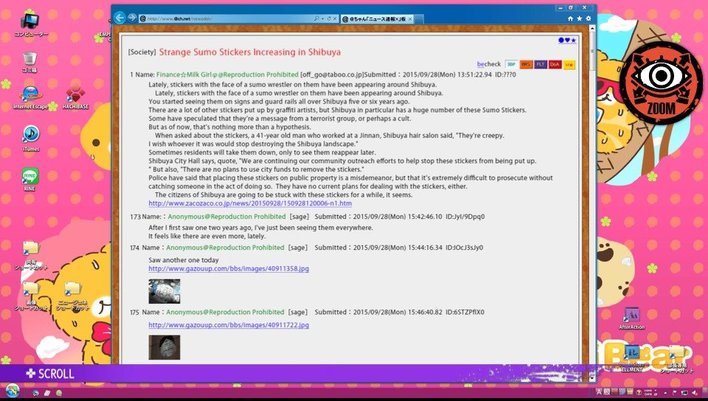
We do approve of Takuru's manly desktop though.
Likewise, we've experienced a few bugs and crashes whilst playing the game too. On occasion, the game seems to lock up when loading the next line of text - the audio stops, characters stand still, and the dialogue box stays blank - and no amount of pressing the X button will move the story on. The only reliable way we've found of getting things going again is a brief press of L1 - although as that fast-forwards over a good dozen lines with even the shortest of presses, you'll need to head into the back log to catch up via triangle. If you're really unlucky, the game may completely crash when loading the next line of text (something which is seemingly most likely to happen as you trigger a delusion), quitting back to the Vita home screen and forcing you to boot the whole game up again to continue. On the plus side, Chaos;Child does have a fairly frequent autosave as a back up to your own manual saves, which always triggers at a delusion point, so you shouldn't lose a great deal of progress.
Despite its flaws though, Chaos;Child does tell a good story, and for that we can (mostly) forgive it a few missteps along the way. Solving the mystery of the Return of the New Generation Madness, with all its twists, turns and red herrings along the way, is surprisingly hard to put down, keeping us up for many a night along the way as the revelations kept coming thick and fast. More dark murder mystery and less time travel sci-fi, Chaos;Child is a bit of a different beast to fellow visual novel Steins;Gate, but one that we ultimately ended up preferring - so fans of the 'Science Adventure' series should definitely give it a look, as should any one that likes a good visual novel.
Format Reviewed: PS Vita

